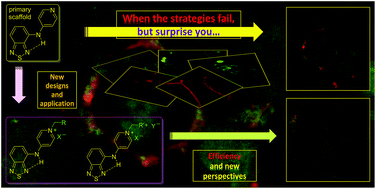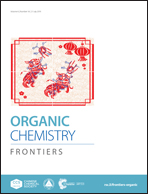When the strategies for cellular selectivity fail. Challenges and surprises in the design and application of fluorescent benzothiadiazole derivatives for mitochondrial staining†
Abstract
This work describes a series of fluorescent 2,1,3-benzothiadiazole derivatives (neutral, singly-charged and doubly-charged) to act as bioprobes for mitochondria. The results showed the flaws in the molecular architecture of this class of fluorophores and our attempts to direct the synthesized derivatives to the organelle. Unexpected results also showed a need for new strategies to predict the cellular selectivity of these derivatives. One of the singly-charged derivatives could stain mitochondria selectively whereas the doubly-charged stained the plasma membrane in an unexpected but highly selective manner. Co-staining experiments confirmed the cellular localization of the new derivatives. EPR experiments demonstrated the fluorescent marker that is selective for mitochondria does not interfere in the ROS production of the cells.



 Please wait while we load your content...
Please wait while we load your content...